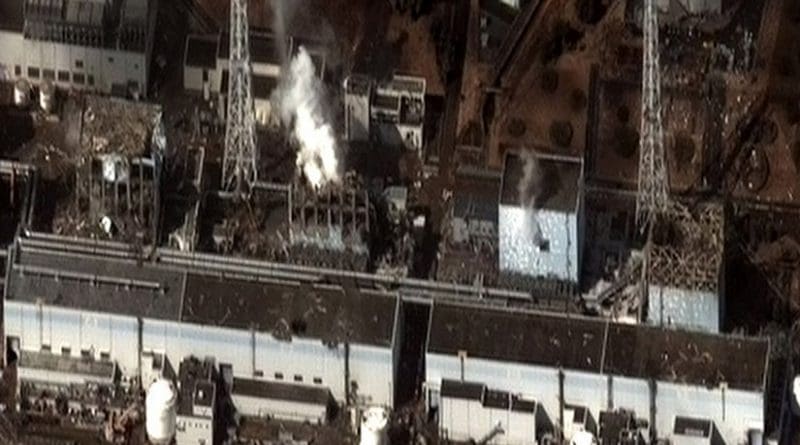Japan: Living In The Shadow Of Fukushima Daiichi Nuclear Plant
By UCA News
Minamisoma City sits just a short distance from the accident-plagued Fukushima Daiichi nuclear power plant. Some of its suburbs lie within the 20km radius that has been evacuated, while others further out lie within the 30km radius where special precautions, such as staying indoors whenever possible, have been advised.
The city was already devastated by both the March 11 earthquake and tsunami: more than 300 people have been confirmed dead, 1,100 are still missing, and 1,800 houses near the sea have been destroyed. Now, due to the incidents at the nuclear plant, about 50,000 residents out of a population of 70,000 have fled the area for other cities or even other prefectures.
“In the two weeks following the explosions [at the nuclear plant] on March 12 and 14, people streamed out of the city,” Ikuko Takano, 58, told national Catholic weekly newspaper Katorikku Shimbun on April 4. Takano is a parishioner at Haramachi Church in Minamisoma, which is 25km from Fukushima Daiichi.
During the same two weeks, those left behind were cut off, as the delivery of food and gasoline to the area was still impossible. Takano, left too, going to Koriyama, another city in Fukushima Prefecture, where she stayed for a week before returning to Minamisoma.
Finally, at the end of March, fuel and food began filtering into the area, although large supermarkets remained closed. Gasoline could be purchased, even if for only a short time.
“But the post offices aren’t open yet, so even if people send us things, we can’t get them,” she said.
More than 20 people usually attended Haramachi Church before the disaster. Now, only four are left, though the church building itself is unharmed.
“A Catholic layman from Sendai City came once, bringing us rice and water,” said Takano. “I thought it was very brave, coming across torn-up roads to the 30km indoor-evacuation zone. We were so grateful.
“When I got married and moved to this town, I never once dreamed that such a thing could happen to me, a whole 30km away from the nuclear power plant. They said the ground in this area is solid and strong against earthquakes. Besides, recently we keep hearing, ‘[nuclear power] is clean energy.’ Massive earthquakes, awful tsunamis, and even exploding nuclear reactors—they were the farthest things from my mind.”
All of that suddenly changed on March 11. “Now, danger feels so close we can taste it. We humans were the ones that developed the technology, but here we’ve created something we can’t stop. That’s human arrogance for you, I’m afraid. There were a lot of people in this area who worked at that power plant, and a lot of people who were connected to it in other ways.”
Many lost their lives in the tsunami, a fact which causes those who escaped to suffer all the more. “The pain of wondering why [family or friends] weren’t also saved is a feeling we have all been dragging around with us this whole time. Because of the fear of radioactivity after the nuclear incident, most children have been voluntarily evacuated. If we could even just have been spared the worries over radiation, we could have already reopened the schools. If we could do that, I’m sure more people would come back.”
Candlelight vigil for a nuclear-free future
A month has passed since the earthquake and tsunami struck Japan. To mark the tragedy, Greenpeace will hold a candlelight vigil at the Victoria statue in Bangalore’s Cubbon Park at 5.30 p.m. today.
The candlelight vigil in Bangalore is part of a nationwide campaign by Greenpeace and other activists against nuclear power in India.
Other candlelight vigils will be held in more than 15 cities in India.

